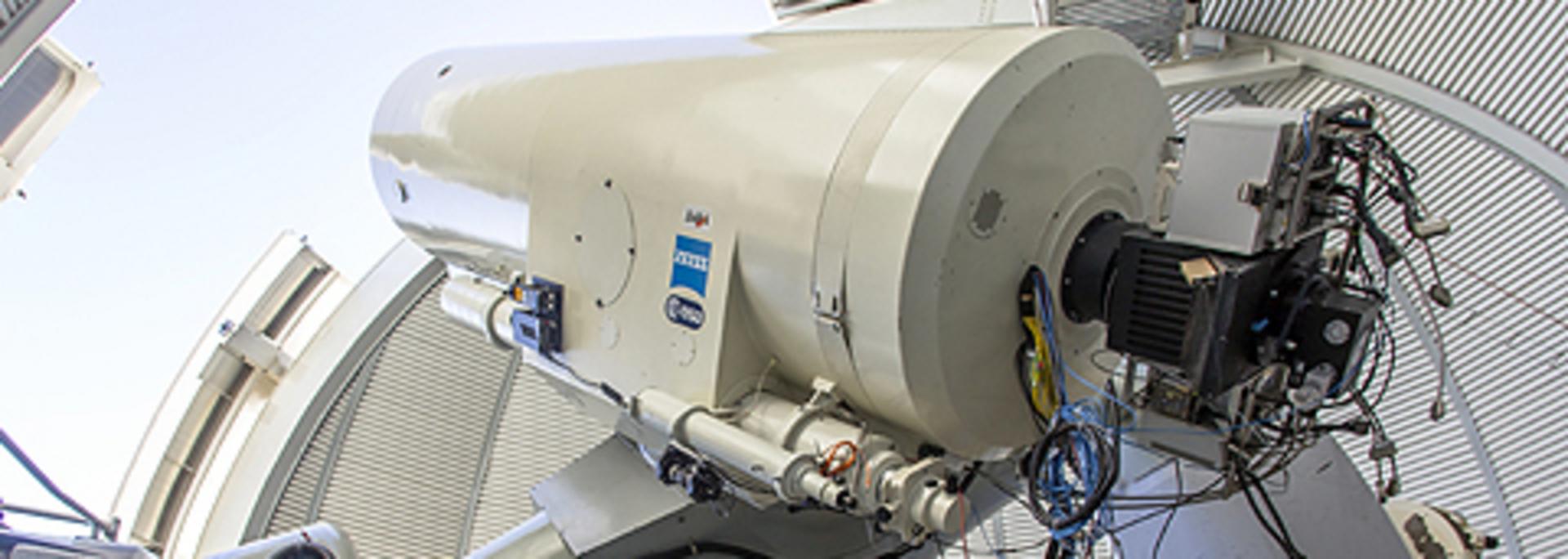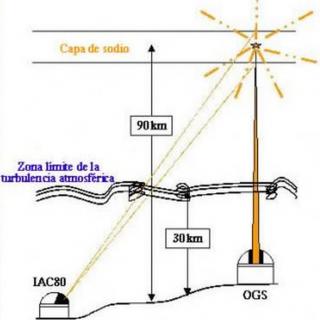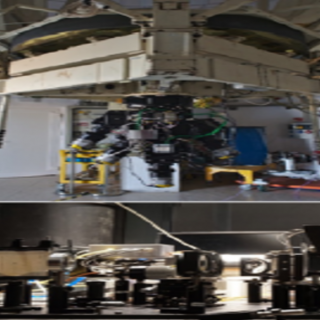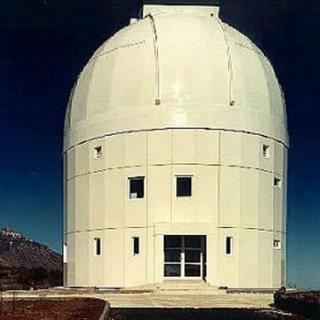Optical Ground Station


The Optical Ground Station (OGS), installed in the Teide observatory 2400 above the sea level, was built as part of ESA long term efforts for research in the field of inter-satellite optical communications. The original purpose of the station, equipped with a telescope (1m aperture), is to perform the in-orbit test of laser telecommunications terminals on board of satellites in Low Earth Orbit and Geostationary Orbit. Since 2001, the ESA survey of Space Debris in the Geostationary Orbit and the Geostationary Transfer Orbit is also being carried out with a devoted wide field camera attached to the Ritchey-Chretien focus. Furthermore, approximately a third of the observing time is used for basic astronomical research from ESA and IAC science teams with dedicated instruments either in the coudé or in the Ritchey-Chretien foci.
"The OGS is equipped with a three configuration 1 m. telescope
- Ritchey-Chrétien: focal length 13.3m small field.
-Coudé: focal length 38.95m.
- Ritchey-Chrétien effective focal length 4.5m with field lens wide field (~1 deg2)."
"The Optical Ground Station was inaugurated in 1995. The Instituto de Astrofísica de Canarias participated in the integration of the station instruments and has since then been in charge of the station operation.
Since January 2001, ESA-ESOC has been carrying out periodic survey campaigns of the space debris in GEO and GTO. This is the contribution of ESA to the worldwide common efforts on this task with NASA and NASDA (National Aerospace and Defense Agency of Japan).
Since November 2001, the bidirectional link with GEO satellite ARTEMIS has been established in more than 100 successful sessions. This is in practice the first world stable free optical laser link ground-satellite. The purpose of this programme is the analysis of the effect of atmospheric turbulence on optical communications performance between ground stations and satellites in the geostationary orbit.
Since 2002, a sodium Laser Guide Star has been implemented by IAC in order to analyse the short/long term variation of the height, width and density of the sodium mesospheric layer.
In September 2003, it was performed the validation test of the LUCE optical terminal, the optical payload of OICETS satellite to be launched in 2005 by NASDA."
"A laser-link experiment from the OGS to the SMART-1 satellite is currently being established to test ""beaconless"" acquisition strategies and to measure pointing accuracies and scintillation indices on a long distance laser-link. The links in the cruise phase have been successfully accomplished, the links in the moon orbit phase will begin in the summer of 2005.
Preparations are underway to implement the possibility to communicate with the LUCE terminal onboard the OICETS satellite once it will be launched in 2005.
For the LOLA experiment, Astrium (France) is developing a second generation SILEX laser communication terminal, which will demonstrate communication links between ARTEMIS and an airplane. Similar to the experiments with LUCE, the LOLA terminal will be tested with ARTEMIS from the OGS first.
The German Space Agency (DLR) is funding the development 2 laser communication terminals at the company TESAT. The first terminal will fly in LEO on the TerraSAR-X satellite in 2006. Communication tests will be performed from the OGS to evaluate the impact of atmospheric turbulence on coherent communication technologies.
The second Lagrange orbit (L2) has been identified as an ideal next step to perform laser communication links with the OGS, because of a large data rate expected from the large number of spacecraft, which will be launched there (e. g. James Webb Space Telescope (JWST), LISA pathfinder (SMART- 2), SMART- 3, Herschel/ Planck, GAIA and DARWIN...).
From may 2005 the OGS will be involved in the Experimental Evaluation of Quantum Communications in the frame of ESA funded projects on Quantum Information and Physics Space."
"The periodic laser link sessions performed between ARTEMIS and the OGS since 2001 in varying turbulence and weather conditions have proven that stable and reliable laser communication links are feasible through the atmosphere.
The OGS has commissioned the OPALE laser communication terminal in space and has ever since monitored the:
Pointing, acquisition and tracking performance.
Evolution of the transmit laser power.
Polarization of beacon and communication beams.
Wavelength of beacon and communication beams Bit error rates on the uplink and downlink channels.
"



